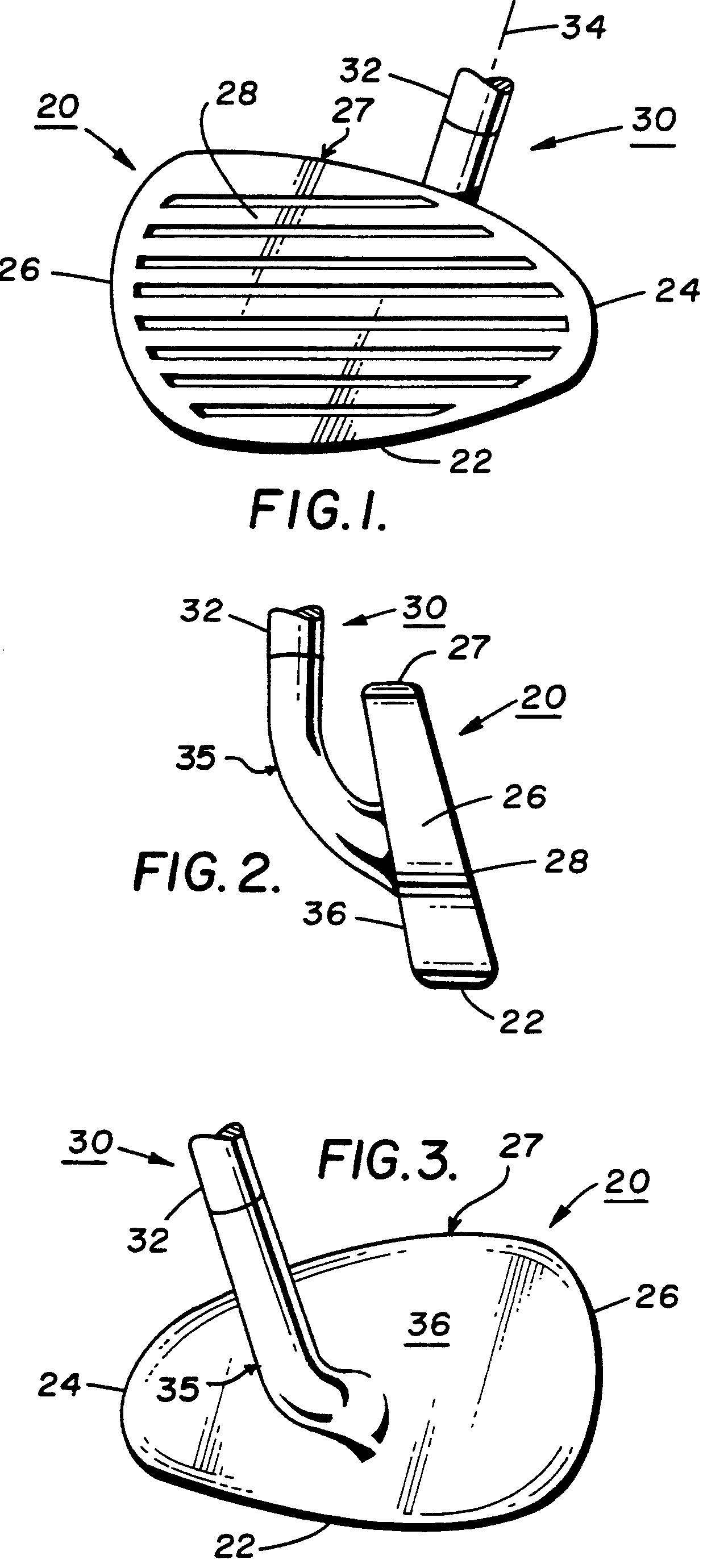Golf-Patent’s “Hot List” Golf Irons
The Golf Digest Hot List 2010 is out and they seemed to have overlooked an important category; namely, the shank-resistant iron category. In the past I have posted (here and here) about golfers obsession with clubs designed to prevent hosel rockets, but somehow I have overlooked this beauty of a club. Check it out:

The design comes from USPN 5338029, which explains:
That’s a beauty. Perhaps someday I will find the time to really create my own “hot list.”
Dave Dawsey - Watching Golf Wedge Patents

The design comes from USPN 5338029, which explains:
The invention relates to a golf club of the iron type, and more particularly to such a club which is less likely to produce a shanked shot than conventional irons.
Golf clubs are made in three distinct types or categories. Among these is the putter, designed to roll the ball on the ground without causing the ball to take flight. The remaining types are designed to propel the ball through the air with various trajectories, and include the several woods (commonly now made with metal heads shaped like conventional woods), and the irons (1-9 irons, pitching wedge, and sand wedge).
The head of an iron comprises a heel and a toe, the former being nearest the golfer when the club is in use and the latter being furthest from the golfer, with the striking face between the heel and toe. The shaft of the club is ordinarily mounted at or attached to the heel of the club, and is accordingly mounted eccentrically with respect to the striking face.
When the iron is swung correctly, contact with the ball is made with a particular portion of the striking face (commonly referred to as "the sweet spot") and the desired trajectory is produced. However, if contact between the ball and the iron is with the heel at the attachment of the shaft, the resulting trajectory of the ball is unpredictable. This unfortunate event is referred to as "shanking" the ball.
These and other difficulties with conventional prior art irons are substantially reduced by the present invention, which provides novel irons having several advantages as noted below.
SUMMARY OF THE INVENTION
According to a primary aspect of the invention, there is provided a golf club of the iron type, comprising a club head having an upper surface, a sole, a heel and a toe, a rear surface and a forward striking face. Each of the rear surface and the striking face extends from the heel to the toe. The striking face lies in a first plane forming an obtuse angle with a horizontal plane. The club head has a center of mass spaced from the sole. The club further comprises an elongated shaft having an axis extending downwardly and outwardly from an upper end thereof to a lower end thereof. Mounting means are provided for mounting the lower end of the shaft on the rear face at a location between the heel and toe and below the upper edge and above the sole with the axis lying in a vertical plane forming an obtuse angle with the first plane. The mounting means comprises a member spaced from and to the rear of the upper edge, and extends downwardly and forwardly to the noted location.
That’s a beauty. Perhaps someday I will find the time to really create my own “hot list.”
Dave Dawsey - Watching Golf Wedge Patents

Comments